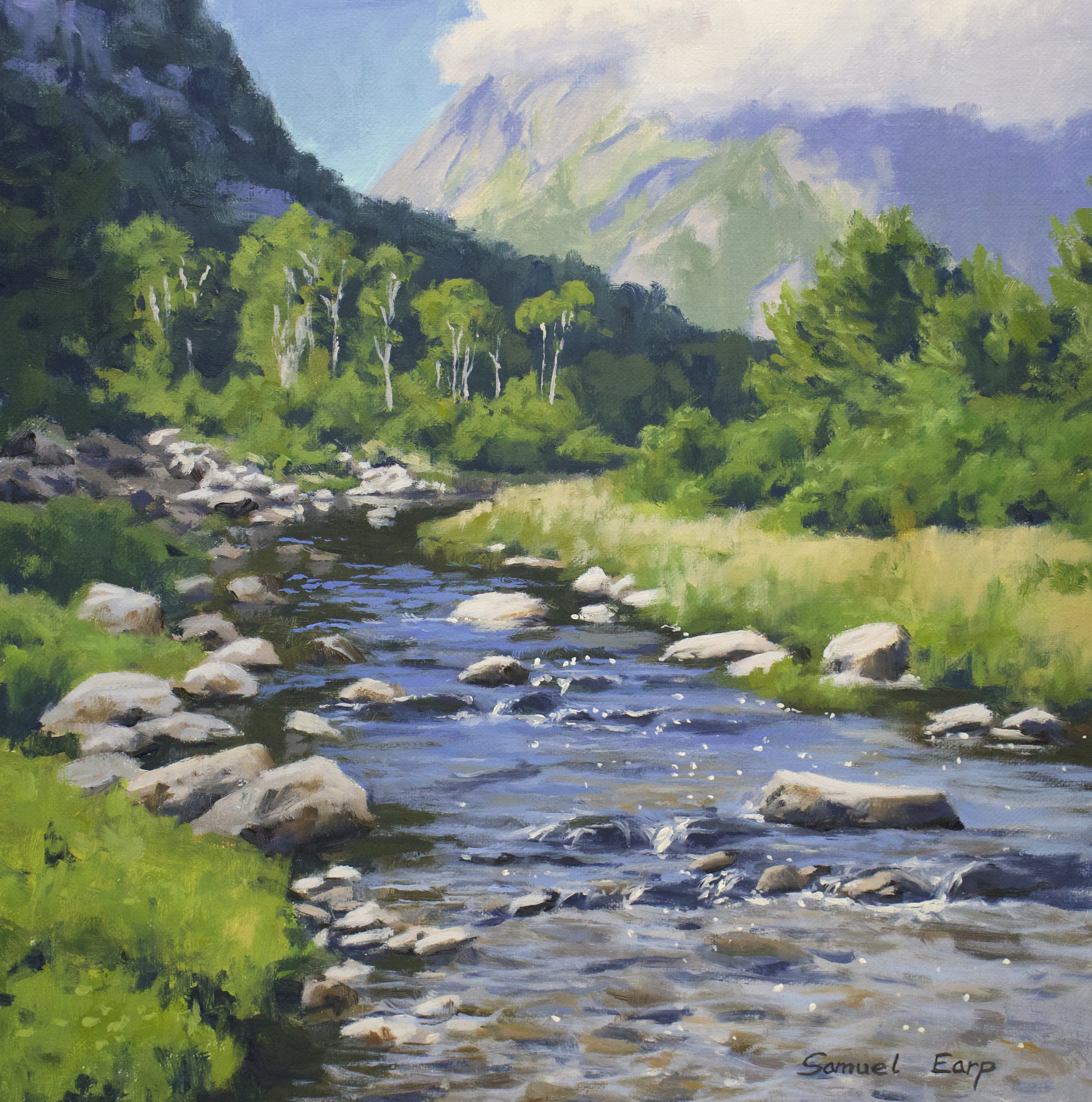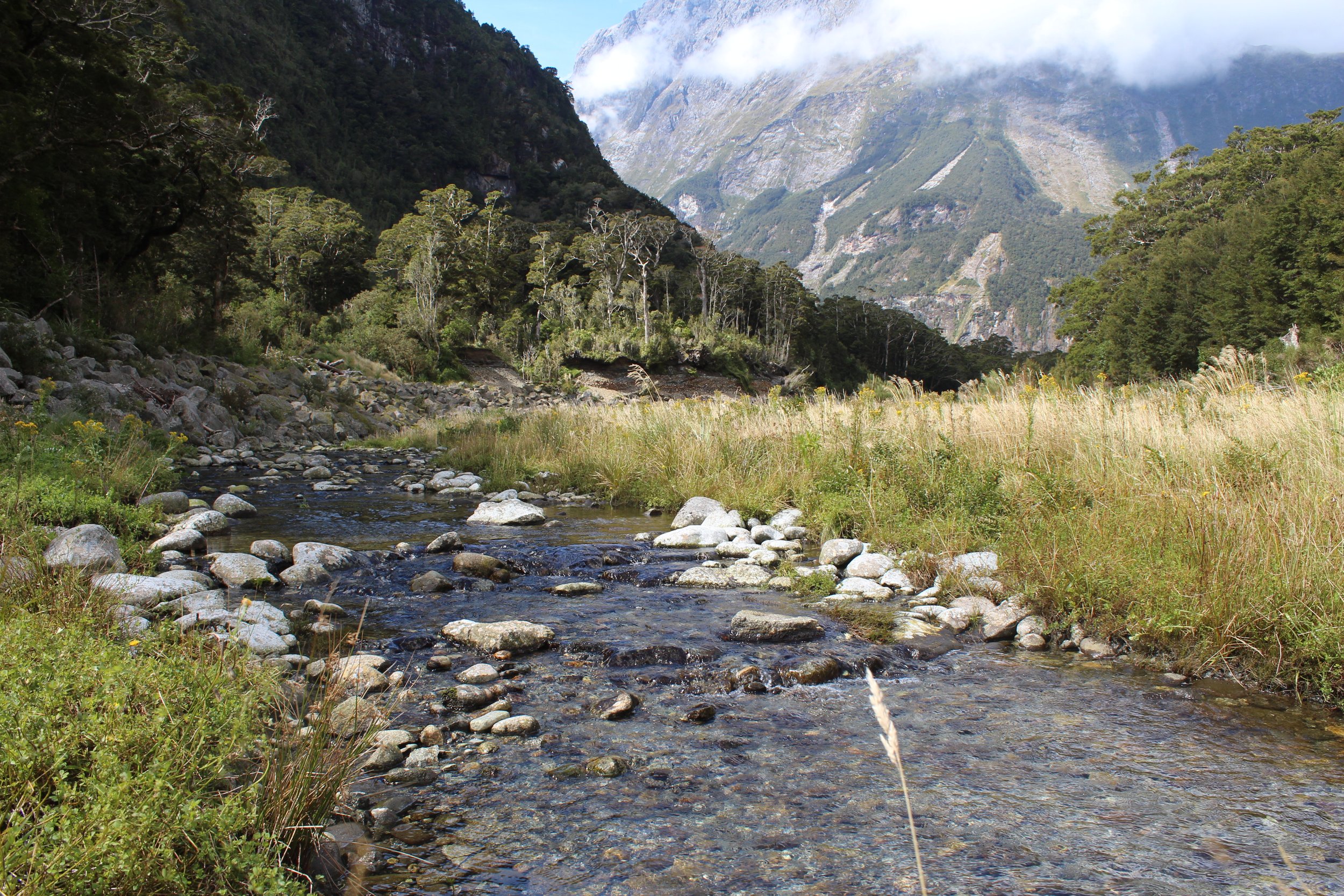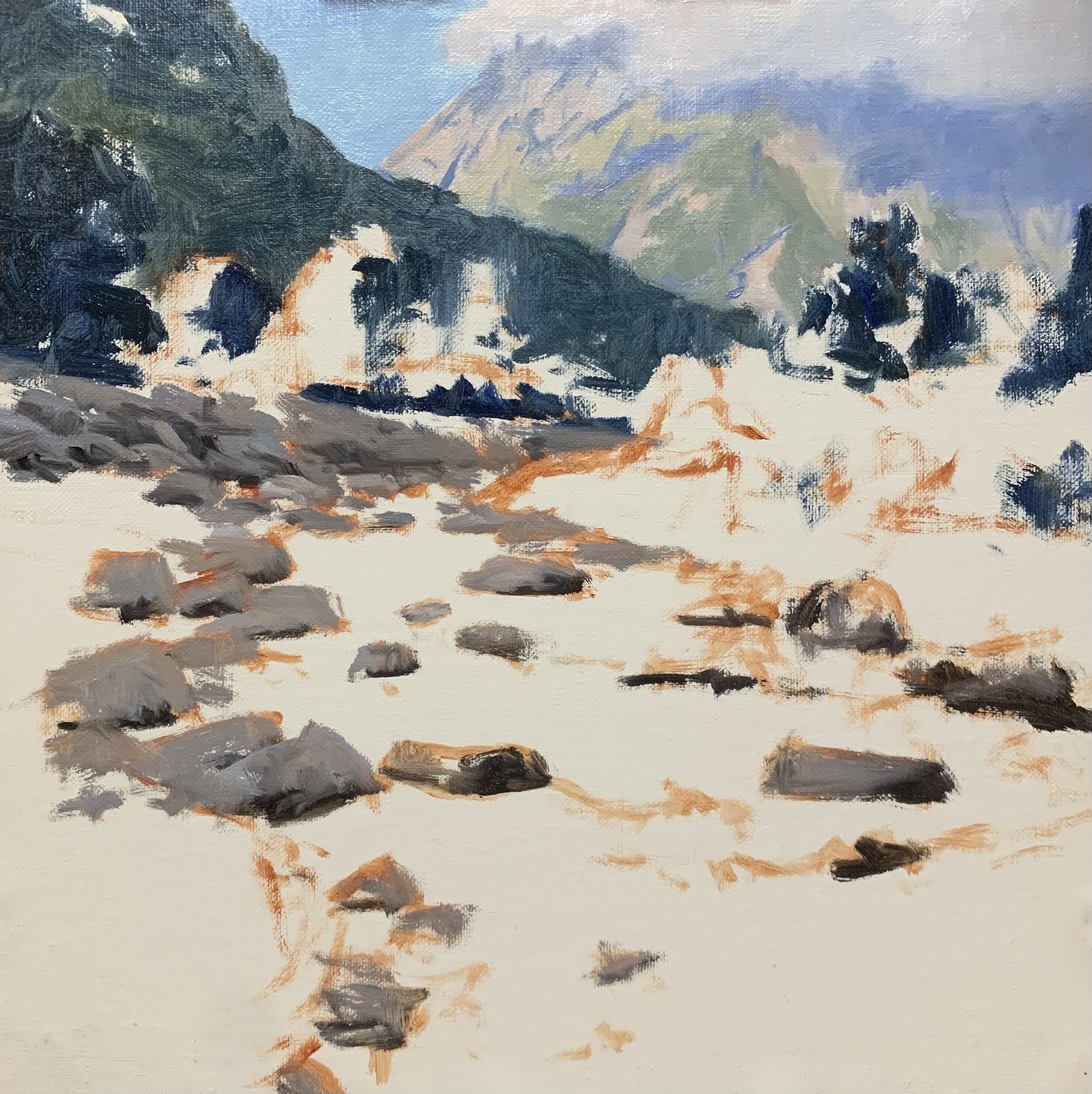
In this blog post, I demonstrate how to paint a landscape that features a mountain river. This painting is inspired by the Fiordland area of New Zealand, a mountainous region that is an excellent subject for landscape paintings.
Suitable for oils and acrylics.
Reference Photo
Here is the reference photo I took and used in this painting. Please feel free to use or copy this photo if you would like to have a go at painting this art work.

Colours
I painted this artwork using oil paint and the colours I used in this particular painting are as follows:
- Titanium white
- Burnt sienna
- Yellow ochre
- Cadmium yellow
- Cadmium red
- Alizarin crimson
- Ultramarine blue
- Phthalo green
Brushes
Here is a list of the brushes I used in this painting:
- No.5 flat
- No.3 flat
- No.2 flat
- No.3 filbert
- No.1 round
- No.0 round
Painting Demonstration
Stage 1 – Blocking-In The Painting
I am painting on a 12” x 12” linen panel. This is a medium weave oil primed linen mounted to a craft panel.
I sketch the composition using a No.1 round brush with burnt sienna mixed with Liquin Original (Liquin). I am using Liquin as a medium to thin the paint and it also has the advantage of speeding up the drying time.

Paint Your Dark Values and Shadows First
Whenever I start a painting I always identify where the dark values and shadows are first in the scene I am painting. Value refers to how light or dark a subject is and by painting in the dark values first I personally find it is much easier to create atmospheric perspective my paintings. It also makes it easier to add the areas in light and to get the saturation of your colours correct once you have painted your dark values.
The dark values in this landscape are mainly the trees and the side of the mountain in the mid ground. The occlusion shadows in the stones and boulders are also dark and there are shadows in the background mountains.
I paint the cloud and mountain shadows using a mix of ultramarine blue, burnt sienna, titanium white and a little alizarin crimson. I make the value for the cloud shadows lighter by mixing in more titanium white.
I use the same colours for the stones as I used for the clouds and mountain shadows but I have used more burnt sienna in my mix. By using similar colours it creates relationships between the various zones in the painting and so the colours are more harmonious. With good colour harmony the painting will read well to the viewer.
I paint the tree shadows with a mix of ultramarine blue and yellow ochre. The mountain side in the mid ground is covered in vegetation but the darks in the shadows will be a little lighter than the foreground shadows so I mix in a little titanium white.

Now that I have painted the dark values and shadows, I start with the furthest zone away in the painting, the sky and mountain and then I work forward.
The sky is a mix of ultramarine blue, phthalo green and titanium white.
The exposed rock faces of the mountain is a mix of ultramarine blue, burnt sienna, titanium white and a little alizarin crimson.
The distant trees and vegetation on the side of the mountain is going to be much lower in colour saturation as it’s far away, so I mix low chroma greens. I use a mix of ultramarine blue, yellow ochre, titanium white and I also mix in a little alizarin crimson and in some areas phthalo green.

Next I paint the trees and vegetation. I mix up a load of greens on my palette that are centred around a core group of colours. I then add more or less of a different colour to get the value or hue that I want. As these greens are in the foreground they are much more saturated compared with the greens in the background mountains.
My green mixes here are predominantly ultramarine blue, yellow ochre, cadmium yellow for my basic green mix. Then I add in a little cadmium red, titanium white for the value that I want and I can increase the saturation by mixing in phthalo green.
I am mostly using No.5 and No.3 flat brushes to apply the paint.

I paint the water by dividing it into three sections. The background of the water is reflecting the vegetation so I use a mix of yellow ochre, ultramarine blue and burnt sienna.
For the blue areas of the water which is mainly reflecting the sky I used a mix of ultramarine blue, phthalo green and titanium white. I’ve also mix a blue combination of ultramarine blue, a little burnt sienna and alizarin crimson and titanium white and I have used these same colours for the clear water in the foreground but with more burnt sienna in the mix.
I paint the suggestion of submerged stones using a mix of burnt sienna, ultramarine blue, titanium white and a little alizarin crimson.
At this point the blocking in stage of this painting was complete and I allowed it to dry.

Stage 2 – Adding Details, Modelling and Refining the Painting
It is during this stage that I build up the details within this mountain landscape and model the paint so I can define the elements within the scene such as the trees, mountain faces, stones and the water. I am essentially using the same colour mixes but I am layering on lighter colours to build up the form of the various masses.
One of the other main things I am doing in this stage of the painting process is to define the various forms in the painting particularly the trees by restating the dark values.

Stage 3 – Final Details
After spending time building up the details in the painting I let it dry so I could add the last details and final highlights which I always save until last.
I added more details to the trees, painting the suggestion of leaves using a No.3 filbert brush. I also paint the stems and branches of the trees in the mid ground using a mix of titanium white, burnt sienna and yellow ochre. I used this same colour at apply highlights to the rocks.
I finish up the painting by adding a few sparkles to the water where it is shimmering in the sunlight. For this I used titanium white with a little yellow ochre.

Thanks for reading.
